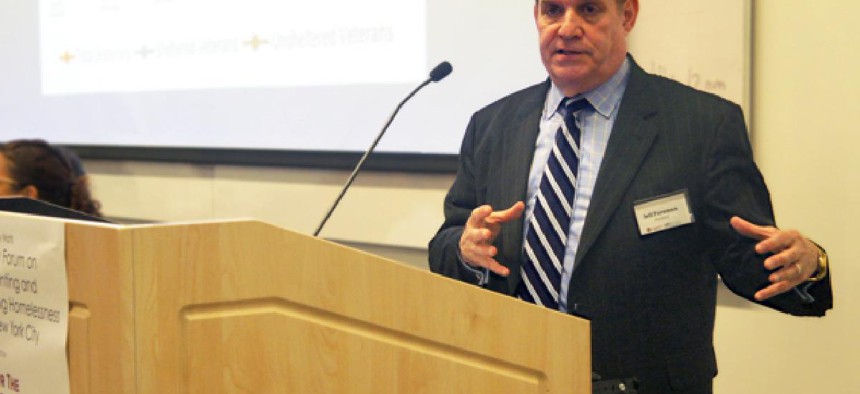We could end family homelessness

Last week the New York Times ran a startling story about a report from the well-respected Institute for Children, Poverty and Homelessness (ICPH), reporting that one in seven of the 100,000 children in our New York City public elementary schools in any given year will be homeless at some point before they reach middle school. Most people expect that number to grow - because a yearly increase is what has been happening.
The full ICPH report documented a tragedy even more pervasive than that. They report over 140,000 New York City school students experienced homelessness over the past six years. That’s a number large enough to be the fourth largest city in the state, just behind Syracuse – and growing quickly.
The report also pointed out that large numbers of homeless students, understandably, had multiple problems other students did not: They tended to move more frequently during the academic year, including school transfers. On average, they missed 88 days of elementary school and were suspended or held back about twice as often as other students. Homeless students scored “Proficient” on state English Language arts assessments at half the rate of other students, and had a much higher highschool dropout rate.
Homelessness is a citywide issue, but it is concentrated by race and economics. The Highbridge and Concourse district in the Bronx were reported to have over 20 percent homeless students; Central Harlem and Manhattanville were at 18.1 percent. At the other end of the spectrum, Staten Island reported 4.4 percent homeless students while the Queens neighborhoods of Bayside, Little Neck, and Fresh Meadows reported 2.5 percent.
Even if these statistics are shocking to some, they cannot be a complete surprise in a city where homelessness may have tripled in the past 20 years, and where the fastest growing part of those experiencing homelessness in recent years has been families and children. The real shame is we could dramatically reverse that trend and we are not.
In New York City, individuals who wish to help homeless children can seek out a nonprofit that is accepting donations of school supplies. Care for the Homeless is currently collecting school supplies for students of all ages such as crayons, pencils, sharpeners, binders, pens, markers, glue, sticks, notebooks, erasers, glue-sticks and rulers.
At the federal level, there is evidence that we can actually end the homelessness crisis. For example, during the Obama administration there was a concerted effort to end chronic homelessness amongst veterans. The plan was not terribly complex, it called for more housing for homeless veterans and a large increase in subsidies to get them into that housing. The federal government obliged by significantly increasing Veterans Affairs Supportive Housing (VASH) vouchers and targeting other vouchers and supports to veterans. It worked, the number of chronically homeless veterans decreased. Whole states and cities, including New York City, claimed victory.
Then in 2016, the Obama administration proposed the same kind of war on family homelessness featuring significant increases on housing vouchers for homeless families and a greater effort at rapid rehousing assistance. The plan called for spending $11 billion over 10 years, with about $8 billion of it for new vouchers.
Even in a country with a nearly $3 trillion budget, $11 billion is a lot of money. But, last week’s ICPH report attesting to a potential lifetime of school failure, economic problems and all the other medical, mental and social problems that can accompany youth homelessness, should make it clear to even the most callous observer that solving this problem would be cost effective. Given the human misery that could be avoided and the cost in public resources that could be saved, an $11 billion program to fight family and child homelessness could be a real bargain.
Jeff Foreman is Policy Director for Care for the Homeless
